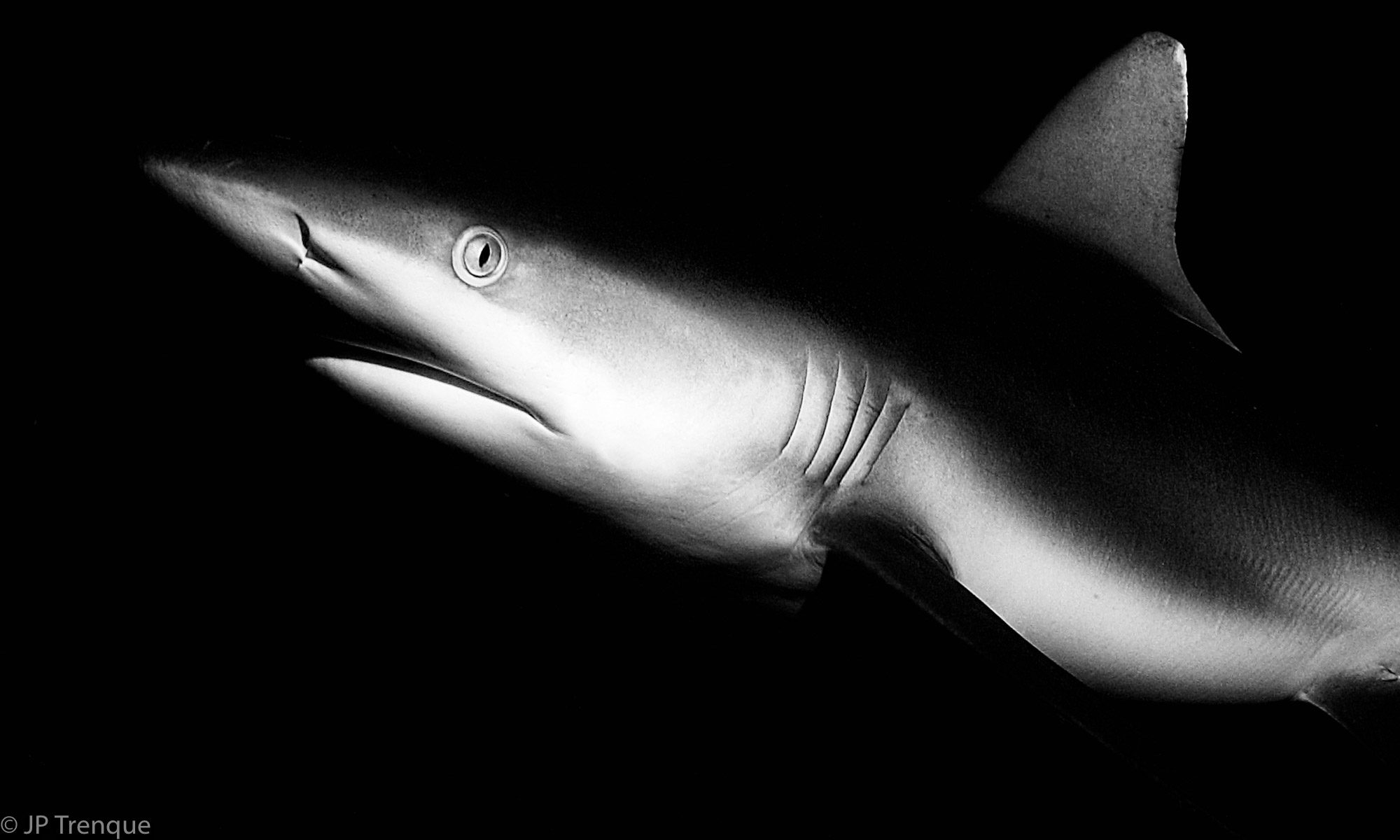A common misconception is to think that temperate water diving is difficult and that our coastline is only surrounded by murky water. Diving around the British isles can indeed be more challenging than in tropical environments and very often, the main objective when arranging UK club dives is to seek thrilling experiences. Taking pictures often comes as an afterthought and a lot of club divers taking a camera often complain about the lack of interesting subjects. Yet, with a bit of planning, it is easy to come back with great images.
One of the keys to success is to organise the dives with photography as the main purpose. Unlike normal divers who swim around to explore a site, underwater photographers make the worst buddies because they tend to find one spot and stick to it for the duration of the dive. But far from missing-out on a variety of subjects, they concentrate on a small number of themes and often tend to spot more interesting tiny critters.
With the advent of compact digital cameras, underwater photography is no longer reserved to a privileged elite. With affordable set-ups now available on the market, a lot of us now take a camera on a dive. For that reason, we have decided to compile a list of five UK dive sites that offer great photographic opportunities and to try and offer a few tips to help you come home with images to keep.
Plymouth – The Eddystone Lighthouse
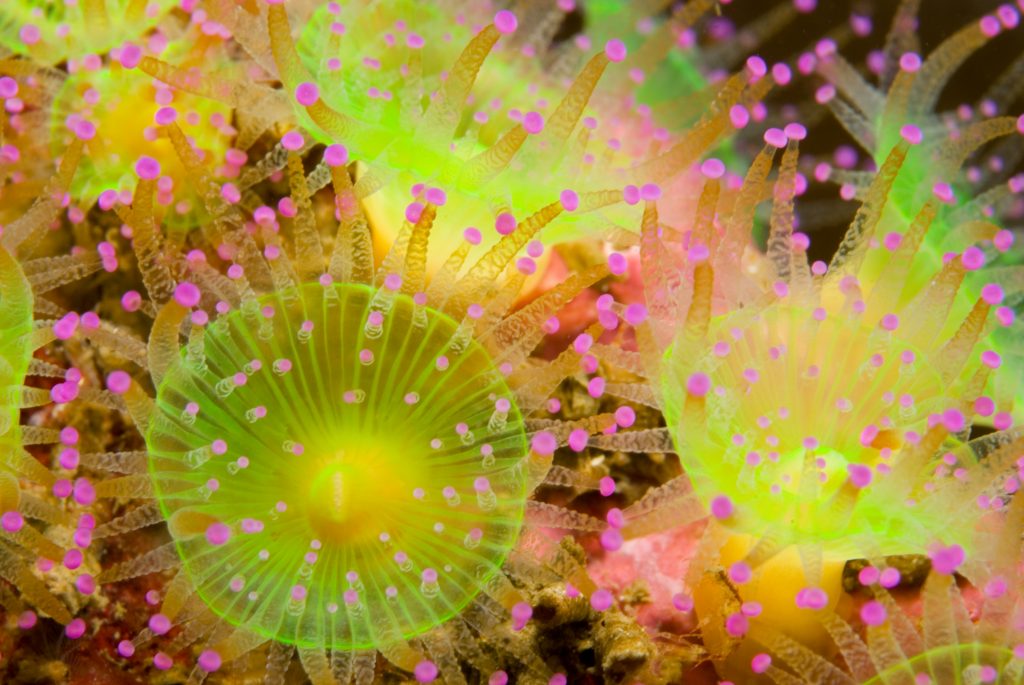
Standing proud 13 miles south-west Plymouth, the Eddystone lighthouse can also be reached easily from nearby Looe. It is perched on a lively reef with many photographic opportunities on offer at any depth. On the South side of the reef, in about 18m, the rocks are carpeted with jewel anemones in an array of colours from yellow and green to pink or purple, which make great macro shots and are firm favourites among photographers entering BSoUP’s British Splash-In Championship every July. Good buoyancy skills are required near the rocks because of the lack of bare spots to hold on to and the occasional surge which can add to the challenge.
Adding light from your built-in flash or an external strobe brings-out the brightness in the anemones as if they’d been painted with day-glo colours. As light doesn’t travel as far underwater as it does on land, it is crucial to get as close to the subject as possible. Before the dive, check the minimum distance your camera will be able to focus on.
Shooting very close to the subject will pretty much guarantee results even when the water is charged with particles. If the visibility is very good, walls of jewel anemones can also make great wide-angle subjects, using ambient light. Setting the camera to manual white balance will reduce the green tinge and bring-up the warmer colours. Best used in the 10-18m range, filters such as the Green Water Magic or UR Pro will also help.
Wittering – Mulberry harbour
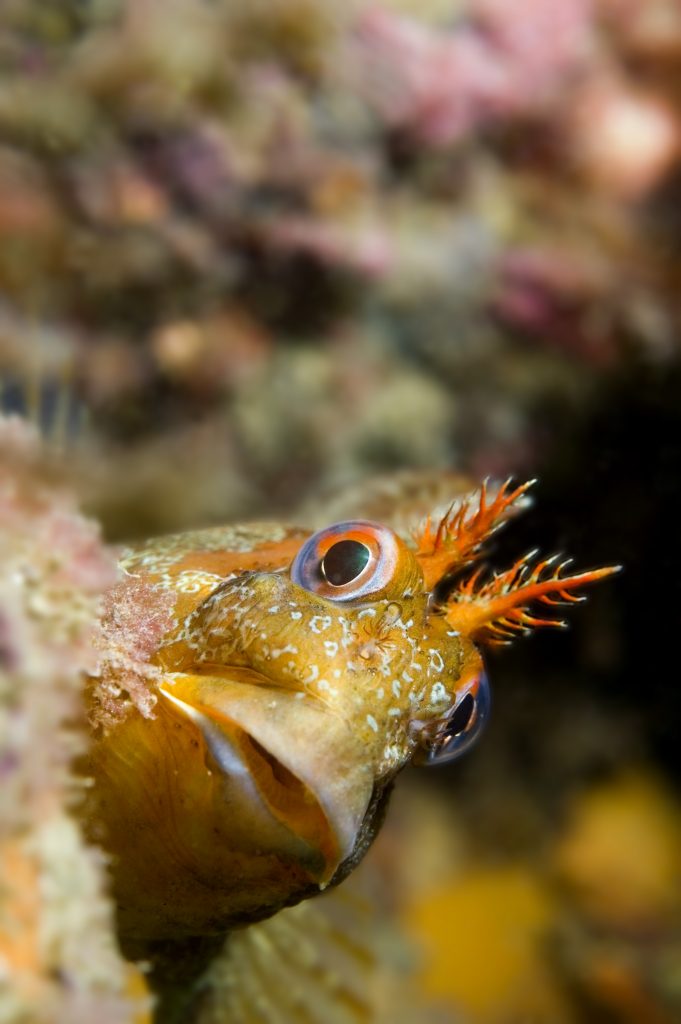
Accessible by fast RIB from East Wittering, the Mulberry harbour is best dived 4h before HW or 3h after HW Portsmouth. Originally designed to be used as a floating harbour in Normandy coast after D-Day, it drifted-off and sank before being towed across the Channel.
The dive is easy and shallow which sometimes causes the site to be quite crowded with less experienced divers trying to complete a couple of laps around the structure in a single dive.
The Mulberry supports a plethora of life including tompot blennies, some of which can be quite inquisitive once they have got used to divers observing them. Once again, it is recommended to find a spot and avoid moving until the animals have had a chance to acclimatise themselves to you. For best photographic results, use a strobe and point the camera slightly upwards to avoid squashing the fish against the background. Around the Mulberry harbour, with a bit of patience, it is possible to see the whole blenny venturing out.
Early season divers visiting the site can also be greeted by lumpsuckers around March/April. Don’t forget to bring a warm windproof jacket with you on the RIB though as the 30-minute ride back can be extremely chilly.
Scapa Flow – The Dresden
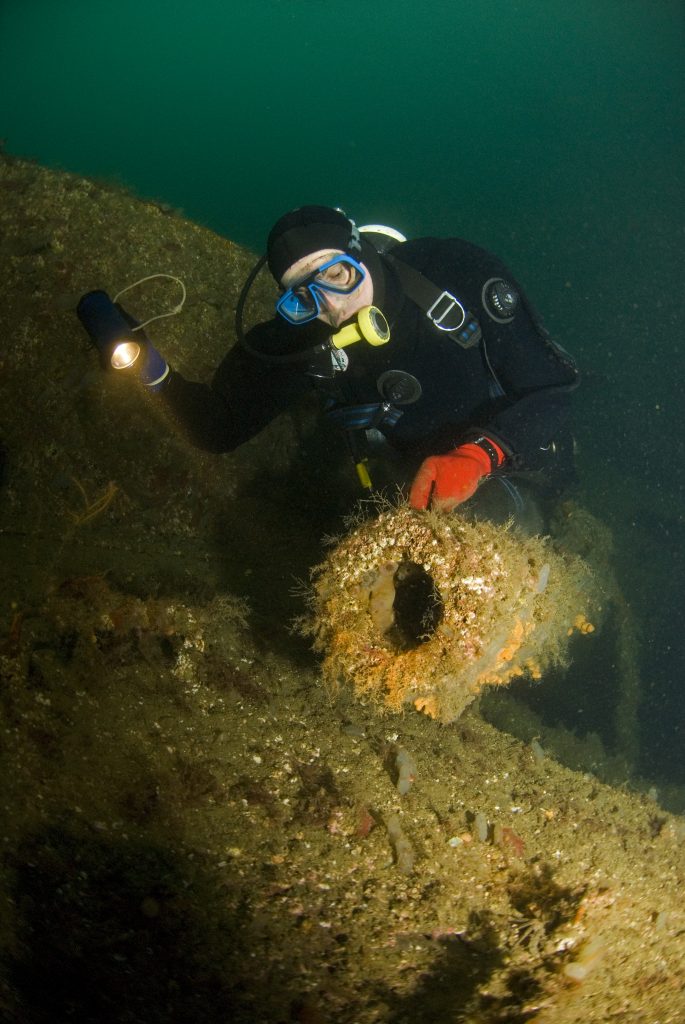
For a majority of people, wrecks represent what UK diving is all about. Using ambient light on a good day in Scapa Flow, when the visibility can reach 20m, it is possible to capture images that show big sections of sunken German vessels. The sheer size of the upside-down battleships – about 25,000 tonnes – makes photographing them more difficult but the smaller light cruisers make perfect subjects.
Lying on its side in about 35m of water, the Dresden is well colonised by dead men’s fingers and plumose anemones. Its deck is instantly recognisable and the 5.9in guns can’t fail to make interesting subjects, especially when conger eels take-up residence in the barrels.
Because of the depth and particles in suspension, the amount of light reaching the deck is reduced. To compensate for this, set the ISO settings on the camera to a high value. This is likely to produce a lot of random red dots on your image but this noise can turn into pleasing grain if you later turn the colour picture into a moody, atmospheric monochrome image especially if you break one of the golden rules of underwater photography and shoot downwards.
If the amount of available light is reduced because the sun is too low or the water is a bit murky, you will need to use external strobes and concentrate on much smaller areas of the wreck. A buddy wearing good looking dive gear and carrying a torch can give scale and add life to the image.
St Abbs – Black Carr
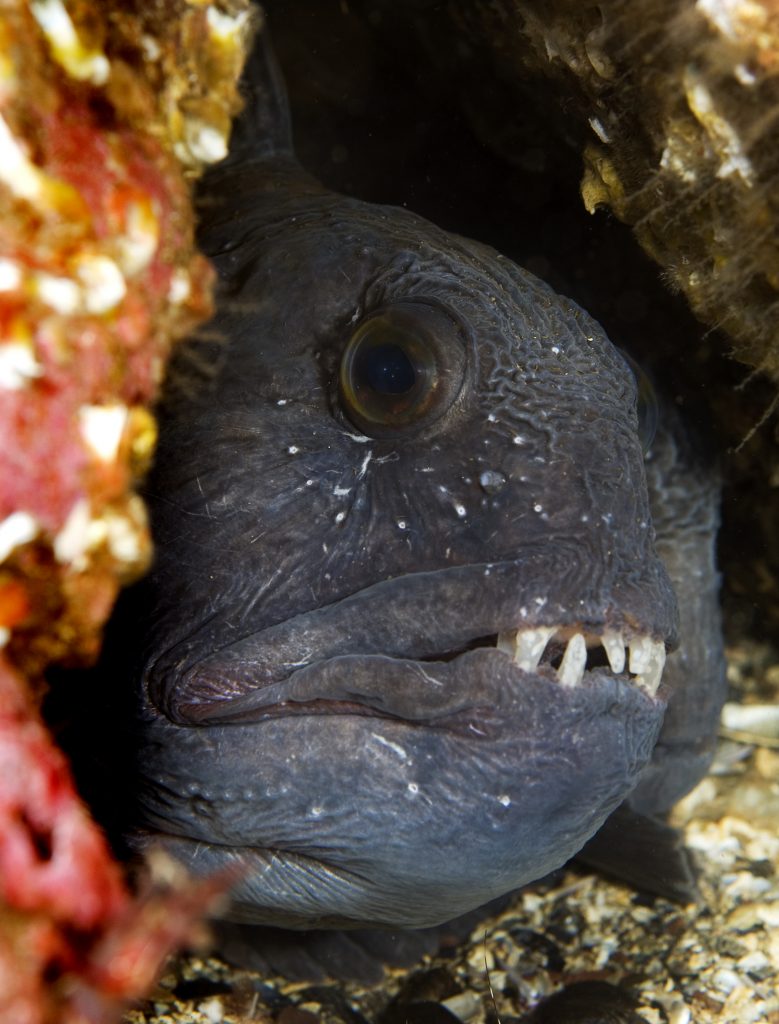
The voluntary marine reserve in St Abbs is the set of the Splash-In competition held each year during the August bank-holiday weekend. The combination of low currents, good visibility and abundance of life make it an ideal place for photographers. One of the favourite subjects is the voracious wolf fish found near Black Carr, a stone’s throw from St Abbs harbour. Living in the deeper part of the site and spending most of its time hiding in crevices among the rocks, wolf fish are sometimes lured out of their burrows by divers waving an urchin, a practice that should be discouraged for the sake of both the urchin and the diver’s fingers.
The rocky seabed on Black Carr is covered in kelp although in places, some patches have been colonised by colourful brittlestars crawling on the bottom in their thousands. These are very photogenic both as wide-angle and macro subjects. Having a compact camera allows you to take a few close-up shots before attaching the add-on fisheye lens and capture panoramas; a distinct advantage over SLR housings.
Black Carr is host to many other interesting species, from octopuses to fearless lobsters and even tiny scorpionfish. You could spend a whole weekend diving the same site and come back with a great variety of images.
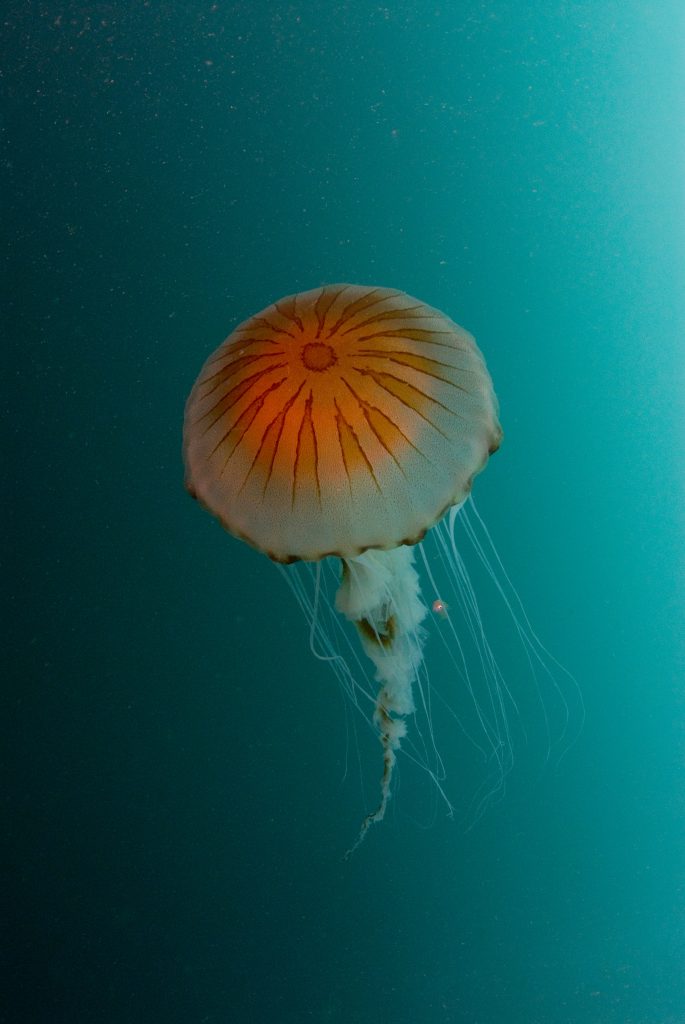
Lundy Island – The Robert
A photography tour of Britain would not be complete without dropping anchor off Lundy, north-west of Clovelly – or south of Tenby depending on which side of the border you reside. As playful seals have featured prominently in recent issues of DIVE, it is worth concentrating on the island’s second best underwater attraction. Over the years, a number of ships have come to grief around Lundy. One of the most colourful wrecks the island has on offer, the Robert sank in 1975 and lies intact on its starboard side in around 22m of water at low tide.
The best time to dive the wreck is at low slack and on the flood tide. As you descend, if the sun is high, it is worth getting a few shots of the plumose anemones and dead man’s fingers that smother the rusting metal. As you reach the deck, a helpful buddy will switch a torch on and illuminate a point of focus on the wreck. If you have a powerful enough strobe, you can try to create balanced light images where the camera aperture is wide enough (small aperture numbers) to capture natural light in the background and your strobe illuminates the scene in the foreground. Combining the well lit orange of the plumose anemones with the green water background in a harmonious image is a technical challenge, but the results can be stunning. To add more life to the image, you can also include a compass jellyfish whose tentacles often get stuck to the wreck.
